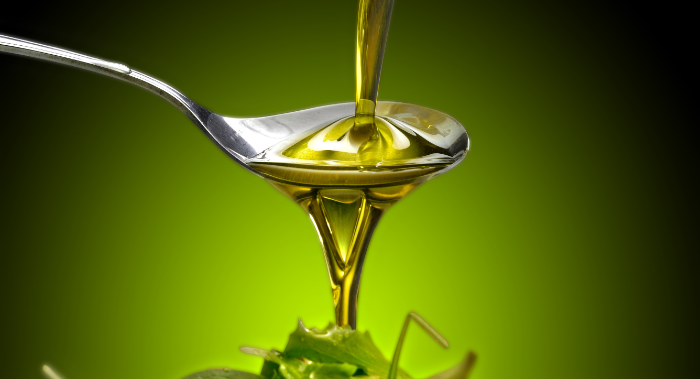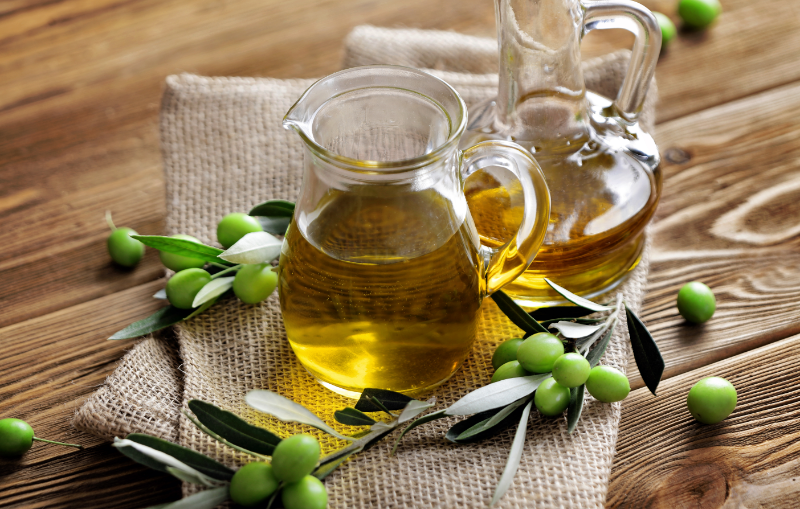Extra virgin olive oil, often referred to as “liquid gold,” or “EVOO”, has been an integral part of culinary and cultural heritage for centuries. With its rich flavor, numerous health benefits, and diverse applications, extra virgin olive oil has earned a coveted spot in kitchens around the world.
But with an abundance of options available, how can you determine the best extra virgin olive oil? In this article, we look into the world of olive oils, exploring the types, production methods, and key factors that help to define the finest varieties.
Types of Olive Oil
Olives are the fruit of the olive tree. The olives are about the size of your thumb just beyond the joint. Olive tree groves flourish in different soils and climates. When they are considered ripe, they are handpicked or mechanically shaken out of the tree.
Olive farmers take great pride in the methods of picking and processing the fresh olives. In the Mediterranean region, olives are coveted as a highly valued commodity. In some areas, only traditional hand-picking is allowed, and the harvested olives are each carefully inspected prior to pressing. These traditional farms produce some of the finest extra virgin olive oils in the world.
The freshly picked olives that will become extra virgin, cold pressed, olive oils are pressed by various mechanical methods as soon as possible after harvesting. The most important thing to know is that the olives are freshly picked and immediately processed. Cold pressing is defined as a process that does not involve adding heat or chemicals in the pressing process of olives. That is the simple definition of cold pressed. After processing, the fresh olive oil is strained or filtered and then stored in a cool environment away from all sources of light.
From there, the oil is packaged and sent out for distribution quickly. It is important to note that most high quality extra virgin olive oils will be marked with the date of harvest. That date should be within a year of the current date.
There are various types of olive oils, each with distinct characteristics derived from the type of olives and the extraction process used. The main types of olive oil include:
- Extra Virgin Olive Oil (EVOO): Regarded as the highest quality and most flavorful olive oil, EVOO is extracted solely through mechanical pressing methods without the use of chemicals or added heat. It retains the natural flavors, aromas, and nutritional value of the olives, making it perfect for drizzling over salads, dipping with bread, drinking straight or finishing a variety of dishes.
- Virgin Olive Oil: Similar to extra virgin olive oil, virgin olive oil is also mechanically extracted. However, it may have a slightly higher acidity and a milder flavor compared to EVOO because it may include a blend of quality olives from various regions. This extraction method purifies the oil, and therefore it cannot be labeled as extra virgin.
- Pure Olive Oil (Refined Olive Oil): This type of olive oil is a blend of virgin olive oil and/or refined olive oils. It undergoes heated processing to remove impurities and acidity, resulting in a much milder taste and a dramatic decrease in its health benefits. It’s suitable for high heat cooking and frying due to its higher smoke point.
- Light Olive Oil: Contrary to its name, “light” olive oil doesn’t refer to reduced calories. Instead, it signifies a lighter flavor and color due to a higher proportion of refined olive oil. It’s also suitable for high-heat cooking. This allows the chef to incorporate the entire realm of olive oils for any cuisine.
- The Myth: (Extra virgin olive oil is not suited for high heat cooking). Extra virgin olive oil is not generally used for high heat cooking due to its lower smoke point. EVOO is best used for culinary creations that can benefit from the addition of its unique flavor profiles. However, EVOO is suitable for sautéing, stir-frying, cooking eggs and baking. Pure (refined) olive oil can match or exceed the smoke point of most cooking oils, allowing you to stick with olive oil for most of your cooking needs.
Factors that Define the Best Olive Oil
- Quality and Freshness of Olives: The best olive oils are made from fresh, high-quality olives. The timing of harvesting plays a crucial role in the oil’s flavor profile. Early harvest olives tend to produce oil with robust flavors and a peppery finish, while late harvest olives yield smoother, milder oils. The flavors also vary depending on the climate and soil conditions of the olive groves.
- Processing Method: Extra virgin olive oil is extracted through cold pressing by mechanical means, preserving the olives’ natural attributes. Cold-pressing, which involves crushing olives without adding heat or chemicals, helps to maintain the oil’s unique flavor while retaining the health benefits.
- Acidity Level: Acidity is a key indicator of olive oil quality. Extra virgin olive oil must have an acidity level of less than 0.8% (certified). Lower acidity generally signifies higher quality, and the oil will have a smoother, more robust and less bitter taste.
- Flavor Profile: The flavor of extra virgin olive oil can range from fruity and grassy to peppery and robust. The best extra virgin olive oils offer a well-balanced combination of these flavors, enhancing the overall taste and culinary experience. Let’s compare it to choosing your favorite apples. They are all apples, but there are many varieties.
- Packaging: High-quality extra virgin olive oil is packaged in dark glass or plastic bottles to protect it from light and air, which can degrade its quality over time. The bottle’s label should indicate a date of harvest. If the date of harvest is close to two years ago, you might want to consider a bottle that has a more recent harvest date. The container should be made of a dark colored material to protect the oil from light. Plastic bottles are more common in today’s world, so try not to judge the contents by its container.
- Certifications: Look for olive oils that have been certified by reputable organizations, such as the International Olive Council (IOC) or various regional associations, which ensure adherence to stringent quality standards. Do your research in the store and online. You can learn a lot about the origin and processing methods by reading labels and viewing the company’s details online.
Exploring Regional Excellence
Various regions around the world are renowned for producing exceptional extra virgin olive oils, each with its own unique characteristics:
- Italy: Known for its diverse olive cultivars, Italy produces oils ranging from delicate to robust. Tuscan oils are celebrated for their peppery notes, while Ligurian oils offer a more delicate flavor.
- Morocco and Spain: Morocco and Spain are two of the largest olive oil producers, offering a wide range of oils. Spanish Andalusian oils often have a fruity taste, while oils from Catalonia are known for their nutty and herbal flavors. Moroccan oils have very low acidity and almost no bitterness making them a spectacular addition to any meal or to drink daily.
- Greece: Greek olive oils are often rich and fruity, with a strong emphasis on tradition. The Kalamata region is especially famous for its high-quality oils. Be prepared to pay more for superior quality extra virgin olive oils.
- California, USA: California has emerged as a notable producer of high-quality olive oils. With a focus on craftsmanship, California olive oil producers are innovative, however they don’t not have thousands of years of traditional processing experience.
The best extra virgin olive oil is a culmination of various factors, including the quality of the olives, processing methods, low acidity levels, and flavor profiles. Extra virgin olive oil, with its pristine extraction process and rich taste, is often regarded as the top choice among chefs and olive oil enthusiasts. When seeking the finest extra virgin olive oil, consider exploring various regions of origin to experience the nuances of flavor and aroma that each one offers.
Try to stick with single estate brands. Remember to look for reputable cultivars, certifications, and take your personal taste preferences into account. Some of the highest-polyphenol, antioxidant-rich olive oils come from Morocco and Spain. The flavor of extra-virgin, cold-pressed, single-estate Moroccan olive oil is unmatched. Remember to give it a try.
Please leave a comment, question or suggestion below. Thank you!
Tom – Owner, Olive Oil Lover





